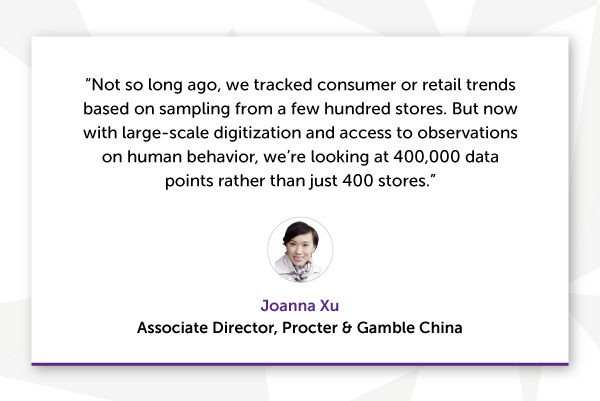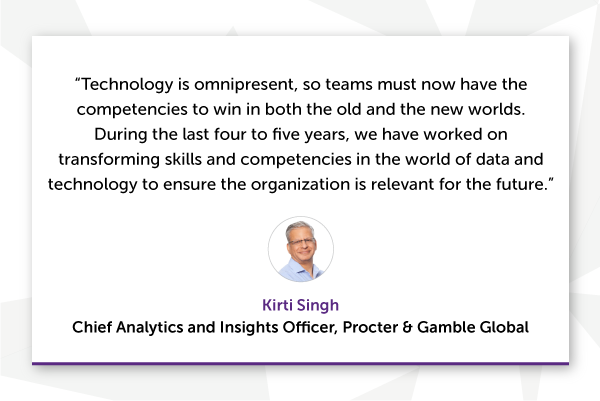In our quest to find out how the analytics and insights space is evolving in the consumer packaged goods (CPG) industry, we recently spoke with some trail-blazing analytics executives. We find that global CPGs are organizing themselves to discover future growth opportunities and deliver insights that help provide consumers with superior brand experiences. The current mantra is to have “eyes on the consumer and hands on the keyboard 24/7.”
The rise of the digital consumer
Shopping is increasingly a digital experience. It’s now commonplace, for example, for consumers to seek information from multiple sources, including digital touchpoints like social media, even before everyday purchases of groceries and packaged goods.
Online shopping, whether that’s for delivery or click and collect has grown by leaps and bounds. Indeed, one result of the COVD-19 pandemic is that various demographic groups have tried online grocery shopping for the first time.
With advancements in in-store automation led by Internet of Things, it is even possible to measure how engaged shoppers are, such as how long they stand in front of a particular display.
More data than ever before is now available to help CPG companies understand and influence consumers.

Real-time actionable analytics: No longer a pipe dream, but hurdles exist
In stark contrast to traditional market research which uses relatively small focused panels and takes longer to generate useful usage and shopper insights, modern analytics draw from a multitude of data sources capturing actual behavior, some of which provides (near) real-time insights rather than waiting for days or weeks after collection.

But with all the potential benefits companies can reap with state-of-the-art analytics technologies and techniques, success stories of enterprise-wide analytics remain confined to a small pocket of CPG visionaries.
Only 40 percent of consumer goods companies investing in digital and analytics technologies have achieved returns above the cost of capital. So, what are the barriers?

Three-step framework for scaling analytics and insights adoption
To help CPG companies achieve the promise of modern A&I, Trax has developed a three-step implementation framework.
Determine where A&I can make the most significant contribution to your business, and identify what’s preventing that implementation. Those roadblocks could be a lack of data, tools or skills — or all three.
Decide which of those shortfalls can be addressed in-house and which require outside assistance; then identifying the partners who will provide that help; and finally, implementing the proof-of-concept project (POC).

Step three is to accelerate the wider rollout of A&I by showing the business value delivered by the POC in order to gain support, and then continuing to show business growth as the POC is expanded or additional projects are delivered. That growth in A&I will likely involve more people, so consider upskilling current employees who know your company and industry rather than relying on hiring new talent.
Analytics and Insights are no longer just optional if you want to compete effectively in today’s business environment. With the right tools, the right data, the right skills, and the right partners, you can integrate analytics and insights into your business processes and reclaim growth. To learn more, download our Reclaiming CPG growth with analytics and insights whitepaper.
Give us some info so the right person can get back to you.